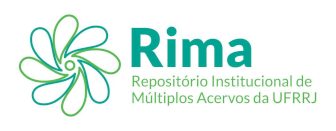Use este identificador para citar ou linkar para este item:
https://rima.ufrrj.br/jspui/handle/20.500.14407/20802| Tipo do documento: | Tese |
| Título: | Estudo da dipterofauna (calliphoridae e mesembrinellidae) em áreas florestal, rural e urbana do Estado do Rio de Janeiro |
| Título(s) alternativo(s): | Study of the dipterofauna (calliphoridae and mesembrinellidae) in forest, rural and urban areas of the State of Rio de Janeiro |
| Autor(es): | Azevedo, Wellington Thadeu de Alcantara |
| Orientador(a): | Alencar, Jeronimo Augusto Fonseca |
| Primeiro coorientador: | Aguiar, Valéria Magalhães |
| Primeiro membro da banca: | Alencar, Jeronimo Augusto Fonseca |
| Segundo membro da banca: | Pereira, Ronaldo Figueiró Portella |
| Terceiro membro da banca: | Maia, Valéria Cid |
| Quarto membro da banca: | Lessa, Cláudia Soares Santos |
| Quinto membro da banca: | Nascimento, Barbara Proença do |
| Palavras-chave: | Bioindicadores;Gradiente ambiental;Efeito de borda;Bioindicators;Environmental gradient;Edge effect |
| Área(s) do CNPq: | Biologia Geral |
| Idioma: | por |
| Data do documento: | 19-Dez-2023 |
| Editor: | Universidade Federal Rural do Rio de Janeiro |
| Sigla da instituição: | UFRRJ |
| Departamento: | Instituto de Ciências Biológicas e Da Saúde |
| Programa: | Programa de Pós-Graduação em Biologia Animal |
| Citação: | AZEVEDO, Wellington Thadeu de Alcantara. Estudo da dipterofauna (calliphoridae e mesembrinellidae) em áreas florestal, rural e urbana do Estado do Rio de Janeiro. 2023. 74 f. Tese (Doutorado em Biologia Animal) - Instituto de Ciências Biológicas e da Saúde, Universidade Federal Rural do Rio de Janeiro, Seropédica, 2023. |
| Resumo: | A Mata Atlântica é um bioma que abrange florestas, restingas, manguezais e campos de altitude, com uma rica biodiversidade, incluindo mais de 15.000 espécies de plantas vasculares endêmicas. Está sob constante pressão devido à ação humana, resultando na fragmentação de seu habitat, intensificando o efeito de borda, causando alterações nas condições bióticas e abióticas nas áreas marginais dos remanescentes, afetando a dispersão de espécies e levando à perda de biodiversidade. Objetivou-se estudar a fauna de Calliphoridae e Mesembrinellidae em três ambientes, florestal, rural e urbano, no Estado do Rio de Janeiro; estudar o efeito de borda no ambiente florestal; avaliar a atratividade destes dípteros por dois estágios de decomposição de isca; e identificar bioindicadores para cada ambiente. Foram instaladas duas armadilhas em cada ponto amostral contendo isca de fígado bovino preservado. O efeito de borda foi avaliado em cinco pontos amostrais ao longo de 1000 metros da borda em direção ao interior da mata no Parque Estadual dos Três Picos, com a caracterização vegetal de cada ponto. Para estudar a atratividade da isca em diferentes estágios de decomposição e a sinantropia, duas armadilhas contendo isca de fígado bovino com 48 horas de putrefação foram adicionadas, considerando o ponto mais interno do ambiente florestal, e dois pontos de coleta adicionais: ambiente rural, campus Seropédica (UFRRJ); e ambiente urbano, campus Urca (UNIRIO). As coletas foram trimestrais, entre junho de 2021 e maio de 2023. Os espécimes foram sacrificados utilizando solução de álcool etílico e acetato de etila, transferidos para o laboratório e identificados taxonomicamente, com base na observação de caracteres morfológicos sob microscópio estereoscópio e consulta a descrições e chaves taxonômicas. Os materiais foram destinados às coleções entomológicas da Universidade Federal do Rio de Janeiro e da Universidade Federal do Estado do Rio de Janeiro. Foram coletados 5.476 dípteros, sendo cinco espécies de Calliphoridae (77,1%), sendo Lucilia eximia (Wiedemann, 1819) (59,3%) e Hemilucilia segmentaria (Fabricius, 1805) (12,9%) as espécies mais abundantes, e 11 de Mesembrinellidae (22,9%), sendo Mesembrinella bellardiana (Aldrich, 1922) (16,3%) e Laneella nigripes (Guimarães, 1977) (4,5%) as espécies mais abundantes. Sete espécies ocorreram comumente e uma raramente quanto à abundância (Krüger, 2006), e cinco foram constantes e sete acidentais quanto à frequência (Dajoz, 1983). Huascaromusca aneiventris (Wiedemann, 1830) (Diptera: Mesembrinellidae) e Paralucilia nigrofacialis (Mello, 1969) (Diptera: Calliphoridae) demostraram preferência por ambientes de maior cobertura de dossel. Eumesembrinella cyaneicyncta (Surcouf, 1919) (Diptera: Mesembrinellidae) e Hemilucilia benoisti (Séguy, 1925) (Diptera: Calliphoridae) foram relacionadas aos pontos a 0 e 200 metros. Laneella nigripes apresentou-se mais abundante nos pontos mais internos. Mesembrinella bellardiana apresentou-se mais abundante nos pontos intermediários. Hemilucilia segmentaria e Lucilia eximia demonstraram-se abundantes ao longo do gradiente. Mesembrinella semihyalina (Mello, 1967) (Diptera: Mesembrinellidae) se correlacionou negativamente com a circunferência na altura do peito (CAP) das árvores consideradas e densidade vegetal. Hemilucilia benoisti se correlacionou negativamente com cobertura de dossel. As espécies do gênero Hemilucilia, L. eximia, P. nigrofacialis, M. bellardiana e M. peregrina (Aldrich, 1922) (Diptera: Mesembrinellidae) se correlacionaram com a precipitação, temperatura e/ou umidade relativa do ar. O perfil de diversidade de Rényi variou ao longo do período de coleta, com maior riqueza e diversidade no inverno e menor no outono. Apenas La. nigripes mostrou preferência por iscas vii de fígado com 48 horas de putrefação. As espécies de Mesembrinellidae ocorreram exclusivamente no ambiente florestal, além de H. benoisti e P. nigrofacialis, sendo assinantrópicas. Hemilucilia segmentaria e H. semidiaphana também foram assinantrópicas, porém ocorreram nos ambientes urbano e/ou rural. As espécies dos gêneros Chrysomya (Robineau-Desvoidy, 1830) e Cochliomyia (Towsend, 1915), e Lucilia cuprina (Wiedemann, 1830) (Diptera: Calliphoridae) foram sinantrópicas. Identificou-se oito espécies potencialmente bioindicadoras em ambientes florestais, destacando-se La. nigripes, M. bellardiana e L. eximia, e quatro para ambientes rurais, destacando-se Cochliomyia macellaria (Fabricius, 1775) (Diptera: Calliphoridae). Trata-se de estudo inédito no PETP. São informações valiosas sobre a ecologia e a distribuição de Calliphoridae e Mesembrinellidae em diferentes ambientes, sendo relatada a primeira ocorrência de M. currani (Guimarães, 1977) (Diptera: Mesembrinellidae) neste bioma, bem como seu potencial como indicadores ambientais e seu comportamento em relação ao estágio de decomposição da isca. Essas descobertas podem contribuir para estudos de conservação e monitoramento ambiental na região estudada. |
| Abstract: | The Atlantic Forest is a biome that encompasses forests, sandbanks, mangroves and high- altitude grasslands, with a high biodiversity, including more than 15,000 species of endemic vascular plants. It is under constant pressure due to human action, resulting in the fragmentation of its habitat, intensifying the edge effect, causing changes in biotic conditions in the marginal areas of the remnants, affecting the dispersal of species and leading to biodiversity loss. The aim was to study the fauna of Calliphoridae and Mesembrinellidae in three environments, forest, rural and urban, in the state of Rio de Janeiro; study the edge effect in the forest environment, evaluate the attractiveness of these diptera by two stages of bait decomposition; and identify bioindicators for each environment. Two traps were installed at each sampling point containing preserved beef liver bait. The edge effect was evaluated at five sampling points along 1000 meters from the edge towards the interior of the forest in the Parque Estadual dos Três Picos, with the vegetal characterization of each point. To study bait attractiveness at different stages of decomposition and synanthropy, two traps containing bovine liver bait with 48 hours of putrefaction were added, considering only the innermost point of the forest environment, and two additional collection points: rural environment, Seropédica campus (UFRRJ); urban environment, Urca campus (UNIRIO). Samples were collected quarterly, between June 2021 and May 2023. The specimens were sacrificed using ethyl alcohol and ethyl acetate solution, transferred to the laboratory and identified taxonomically, based on the observation of morphological characters under a stereoscope microscope and consultation of description and taxonomic keys. The materials were sent to the entomological collection of the Universidade Federal do Rio de Janeiro and the Universidade Federal do Estado do Rio de Janeiro. A total of 5,476 dipterans were collected, of which five were Calliphoridae (77.1%), with Lucilia eximia (Wiedemann, 1819) (59,3%) and Hemilucilia segmentaria (Fabricius, 1805) (12,9%) being the most abundant species, and 11 were Mesembrinellidae (22.9%), with Mesembrinella bellardiana (Aldrich, 1922) (16,3%) and Laneella nigripes (Guimarães, 1977) (4,5%) being the most abundant species. Seven species occurred commonly and one rarely regarding their abundance (Krüger, 2006), and five were constant and seven accidental in frequency (Dajoz, 1983). Huascaromusca aneiventris (Wiedemann, 1830) (Diptera: Mesembrinellidae) and Paralucilia nigrofacialis (Mello, 1969) (Diptera: Calliphoridae) showed a preference for environments with higher canopy coverage. Eumesembrinella cyaneicyncta (Surcouf, 1919) (Diptera: Mesembrinellidae) and Hemilucilia benoisti (Séguy, 1925) (Diptera: Calliphoridae) were related to the points at 0 and 200 meters. Laneella nigripes was more abundant in the innermost points. Mesembrinella bellardiana was more abundant at the intermediate points. Hemilucilia segmentaria and L. eximia were abundant along the gradient. Mesembrinella semihyalina (Mello, 1967) (Diptera: Mesembrinellidae) was negatively correlated with the circumference at breast height (CBH) of the considered trees and plant density. Hemilucilia benoisti was negatively correlated with canopy covering. Species of the genus Hemilucilia, L. eximia, P. nigrofacialis, M. bellardiana and M. peregrina (Aldrich, 1922) (Diptera: Mesembrinellidae) were correlated with precipitation, temperature and/or relative humidity. The Rényi’s diversity profile varied throughout the collection period, with higher richness and diversity in winter and lower in autumn. Only La. nigripes showed a preference for liver baits with 48 hours of putrefaction. The species of Mesembrinellidae ix occurred exclusively in the forest environment, in addition to H. benoisti and P. nigrofacialis, being asynanthropes. Hemilucilia segmentaria and H. semidiaphana were also asynanthropes, but occurred in urban and/or rural environments. Species of the genus Chrysomya (Robineau- Desvoidy, 1830) and Cochliomyia (Towsend, 1915), and Lucilia cuprina (Wiedemann, 1830) (Diptera: Calliphoridae), were synanthropes. Eight potentially bioindicator species were identified for the forest environment, especially La. nigripes, M. bellardiana and L. eximia, and four for rural environments, especially Cochliomyia macellaria (Fabricius, 1775) (Diptera: Callipgoridae). This is an unprecedented study in PETP. This is valuable information about the ecology and distribution of Calliphoridae and Mesembrinellidae in different environments, being reported the first occurrence of M. currani (Guimarães, 1977) (Diptera: Mesembrinellidae) in this biome, as well as these families’ potential as environmental indicators and its behavior in relation to the decomposition stage of the bait. These findings may contribute to conservation studies and environmental monitoring in the studied region. |
| URI: | https://rima.ufrrj.br/jspui/handle/20.500.14407/20802 |
| Aparece nas coleções: | Doutorado em Biologia Animal |
Se for cadastrado no RIMA, poderá receber informações por email.
Se ainda não tem uma conta, cadastre-se aqui!
Arquivos associados a este item:
| Arquivo | Descrição | Tamanho | Formato | |
|---|---|---|---|---|
| 2023 - Wellington Thadeu de Alcantara Azevedo.pdf | 3.03 MB | Adobe PDF |  Abrir |
Os itens no repositório estão protegidos por copyright, com todos os direitos reservados, salvo quando é indicado o contrário.

